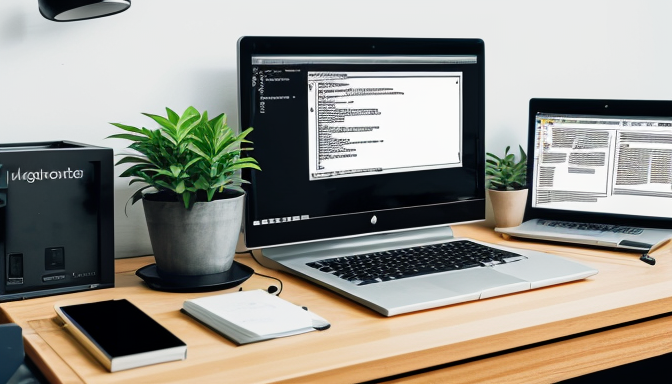Debugging is often viewed as the dark art of programming, but it doesn’t have to be! Imagine you’re a detective, piecing together clues to solve a mystery. Each bug in your code is a clue waiting to be unraveled. In this article, we’ll explore effective debugging techniques, tools, and strategies that will not only enhance your coding skills but also make you feel like a pro in no time. So, why is debugging so crucial? Well, think about it—every line of code is a potential pitfall, and mastering the art of debugging means you can navigate these challenges with confidence.
When it comes to debugging, there are several techniques you can employ. Print debugging is like leaving breadcrumbs; it helps you track the flow of your program by inserting print statements at critical junctures. Then there are interactive debuggers, which allow you to step through your code line by line—imagine having a magnifying glass to inspect every detail! Lastly, logging is essential for capturing the state of your application over time. Each of these methods has its time and place, and knowing when to use them can significantly improve your problem-solving efficiency.
In the vast landscape of coding, the right tools can make all the difference. Consider using an Integrated Development Environment (IDE) that offers built-in debugging features. These tools can save you time and effort, allowing you to focus on what really matters—writing great code! Additionally, there are countless plugins and online platforms designed to streamline the debugging process. For instance, tools like Visual Studio Code and Chrome DevTools provide robust features that can enhance your productivity. By equipping yourself with the right resources, you’ll find that debugging transforms from a chore into a challenge you can conquer!
Understanding Common Debugging Techniques
When it comes to debugging, mastering a few common techniques can make a world of difference. Think of debugging as a detective story; you’re on the hunt for clues that will lead you to the culprit behind the bug. One of the most straightforward methods is print debugging. This technique involves sprinkling print statements throughout your code to track the flow of execution and the state of variables. It’s like leaving breadcrumbs that guide you back to the point where things went awry.
Another powerful technique is using interactive debuggers. These tools allow you to pause your code at specific points and inspect variables, which can be a game-changer when you’re trying to understand complex logic. It’s akin to having a magnifying glass that lets you examine the details closely. You can step through your code line by line, making it easier to spot where things go off track.
Don’t overlook the importance of logging. By recording events in your application, you can create a timeline of actions that helps you pinpoint when and where an issue occurred. Imagine trying to solve a mystery without any notes—logging provides that essential context. Here’s a quick comparison of these techniques:
| Technique | Best Used For | Advantages |
|---|---|---|
| Print Debugging | Simple issues | Easy to implement |
| Interactive Debuggers | Complex logic | In-depth inspection |
| Logging | Tracking events | Historical context |
By combining these techniques, you can create a robust debugging strategy that not only helps you fix issues but also enhances your overall coding skills. So, which technique will you try first?

Tools and Resources for Effective Debugging
When it comes to debugging, having the right tools and resources at your disposal can make all the difference. Think of debugging as a treasure hunt; without the right map and tools, you’re likely to get lost in the code jungle. Here are some essential tools that can help you navigate through the maze of bugs and errors.
First up, we have Integrated Development Environments (IDEs). Popular options like Visual Studio Code, PyCharm, and IntelliJ IDEA come packed with built-in debugging features that allow you to set breakpoints, inspect variables, and step through your code line by line. This is akin to having a magnifying glass that helps you closely examine every detail of your code.
Another invaluable resource is the plethora of plugins. For instance, the Debugger for Chrome plugin lets you debug JavaScript directly in the Chrome browser, making it easier to spot issues in real-time. Additionally, online platforms like Stack Overflow and GitHub are treasure troves of community-driven insights, tutorials, and coding tips that can help you overcome specific challenges. Just remember, even the most seasoned developers rely on these resources!
Lastly, don’t underestimate the power of logging. Tools like Loggly and Sentry can help you track down issues by providing detailed logs of your application’s behavior. Think of logging as your personal detective; it collects evidence that can lead you to the culprit of your bugs.
In summary, leveraging the right tools and resources not only enhances your debugging skills but also improves your overall coding experience. So, equip yourself with these essentials and turn your debugging sessions into a smooth ride!
Frequently Asked Questions
- What is debugging and why is it important?
Debugging is the process of identifying and fixing bugs or errors in your code. It’s crucial because it helps ensure that your software runs smoothly and meets user expectations. Think of it as giving your code a health check-up!
- What are some common debugging techniques?
Some popular debugging techniques include print debugging, where you add print statements to check values, and using interactive debuggers that allow you to step through your code line by line. Each method has its own strengths, so choose based on your needs!
- Which tools can help with debugging?
There are numerous tools available, like integrated development environments (IDEs) that come with built-in debuggers, plugins that enhance functionality, and online platforms that offer collaborative debugging features. Explore and find what works best for you!
- How do I know when to debug?
If your code isn’t behaving as expected or throwing errors, it’s time to debug! Think of it as troubleshooting a car that won’t start; you need to investigate what’s wrong to get it running smoothly again.
